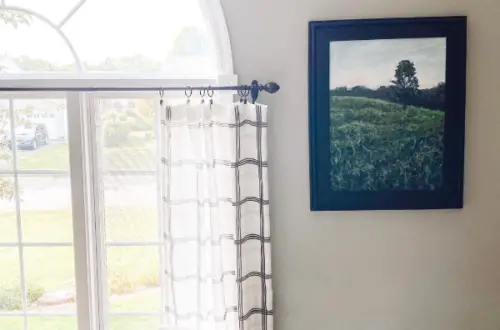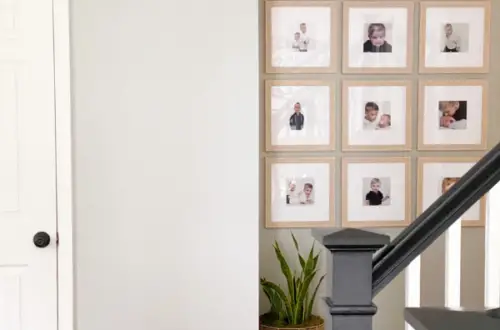
How to Fill the Gap Between Cabinet and Ceiling
Recently we remodeled our kitchen, including painting the natural brown wood cabinets white. (You can read more about the kitchen remodel here: https://lizzydesignsblog.com/kitchen-remodel-10-simple-ways-to-update-a-kitchen/) While doing so, we noticed there were some ceiling gaps that needed to be filled. However, some were too large to just fill with caulk. After some research, we found an easy solution. These kinds of gaps can be problems in all types of situations, so I thought I’d share here how to fill the gap between cabinet and ceiling.
Before
Here is what the kitchen looked like before:

After
Here is the kitchen after (with the gaps filled as well):

(This post contains affiliate links. This means I receive a small compensation at no cost to you. For example, as an Amazon Associate I earn from qualifying purchases. You can read more about it here. Thank you for your support!)
The Gaps
Apparently there were gaps between the ceiling and the cabinets in several spots. These cabinets weren’t the original ones in this house, so sometimes things like gaps occur due to house settling and just slight variations and imperfections. These things happen! When the cabinets were brown, these gaps weren’t noticeable. However, once they were painted white they were. It created shadowing that made them very obvious. In fact, I had a hard time not having my eye go directly to those gaps! We needed to figure out how to fill the gap between cabinet and ceiling.
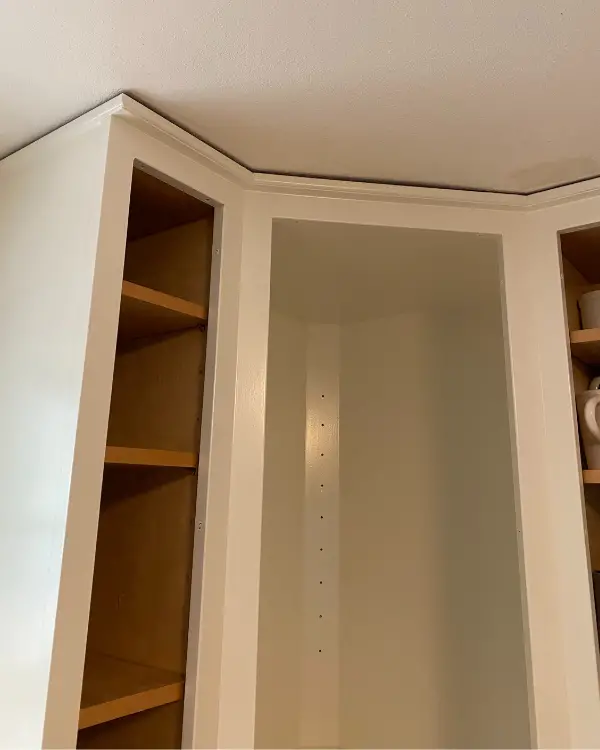
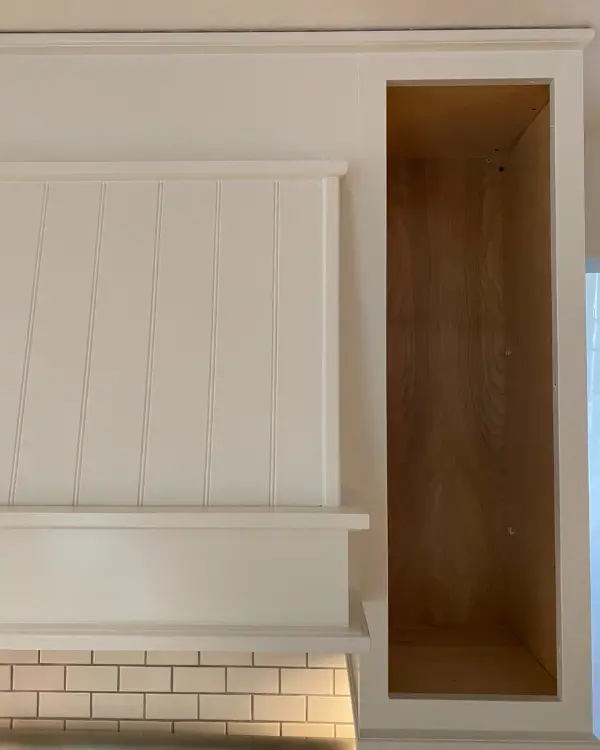

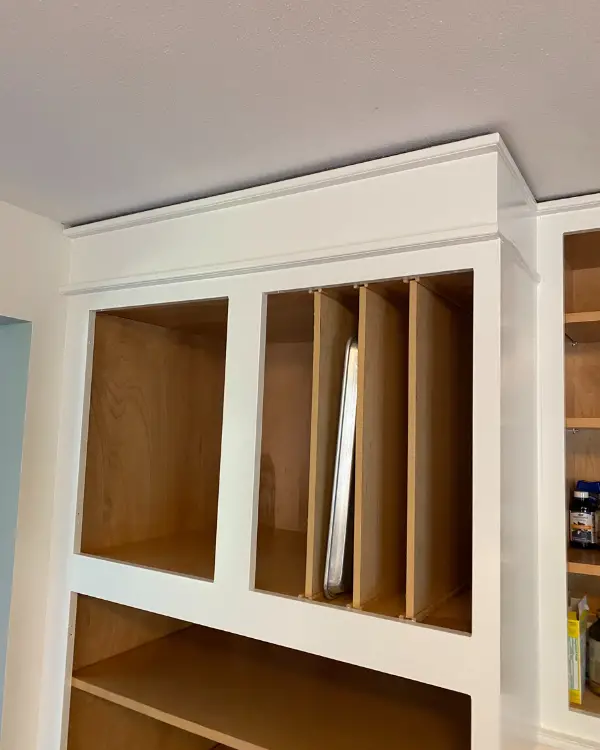
We knew that some of the gaps were too big to just fill with caulk. Then we found this!

How to Use Backer Rod
The largest gap we had was just over 1/2 inch, so we needed backer rod to give the caulk something to adhere to in the space.
Tim took 2 strips of 3/8 inch backer rod and twisted them together to form a stronger backing in the gap. He then pushed it into the gap. Sometimes a screwdriver helped to get it in there well.
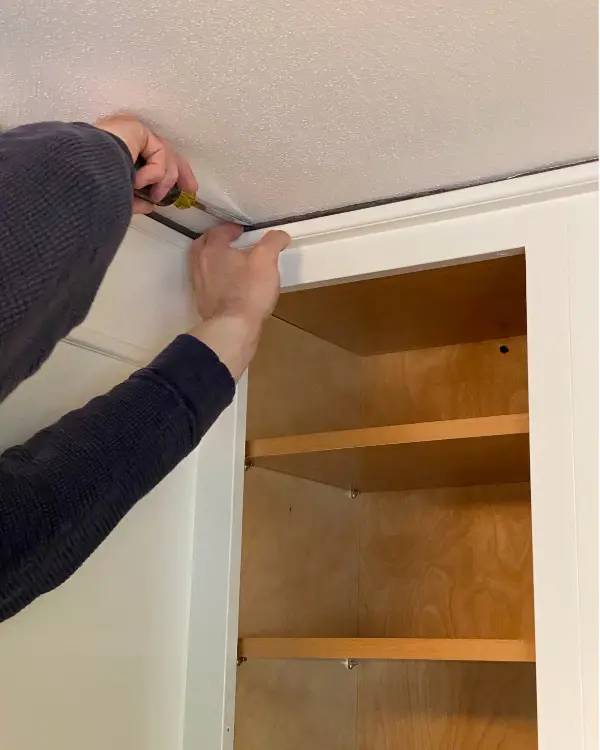
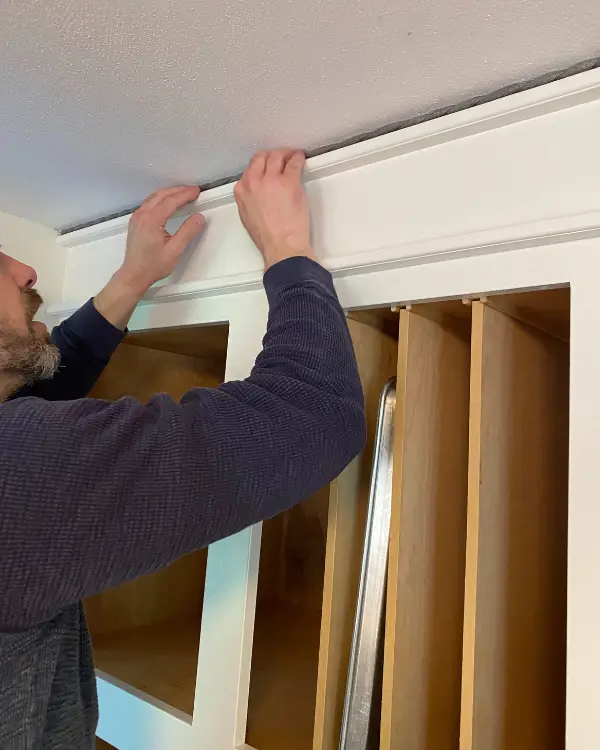
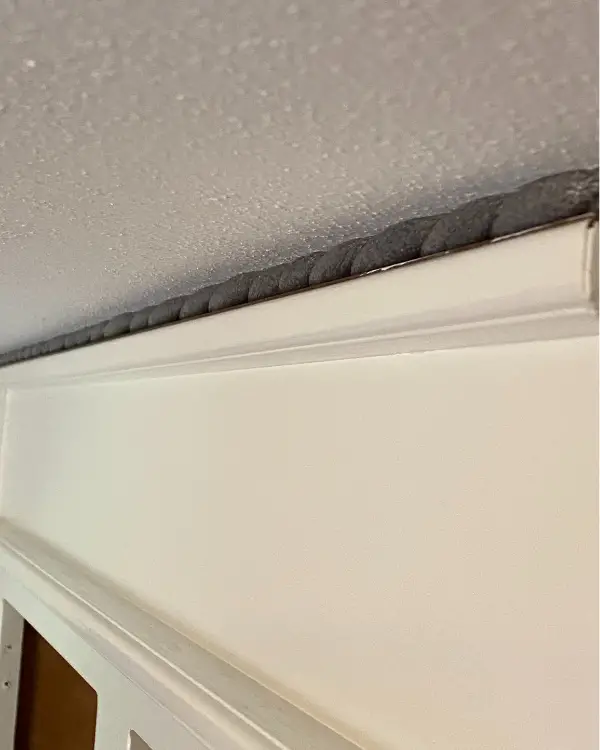
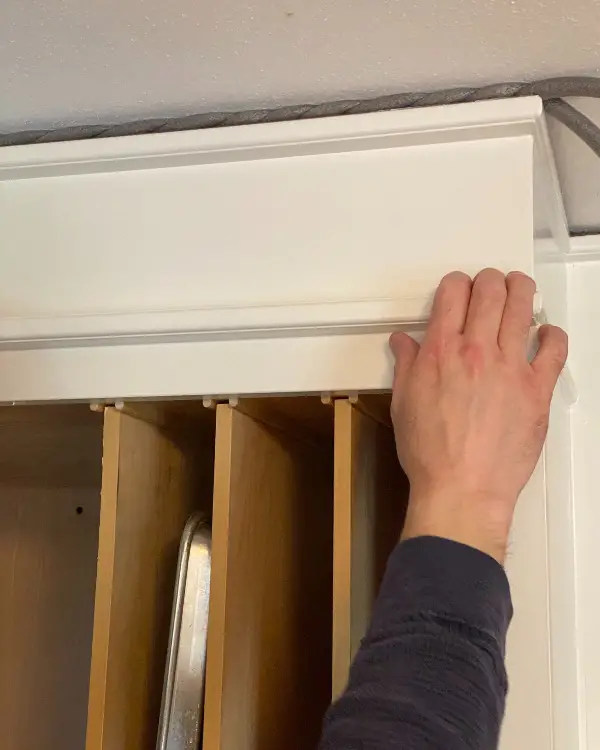
He could then fill it in with caulk.
We went with DAP Dynaflex Ultra caulk because of its flexibility, its multi-material adhesion, and it is also paintable. Placing the caulk in the gap took multiple applications to fill in the space and to get a smooth outer edge. After every layer of caulk, he smoothed it over using a finger (you should wear gloves for this). Several layers of caulk were needed, allowing for drying time in between.


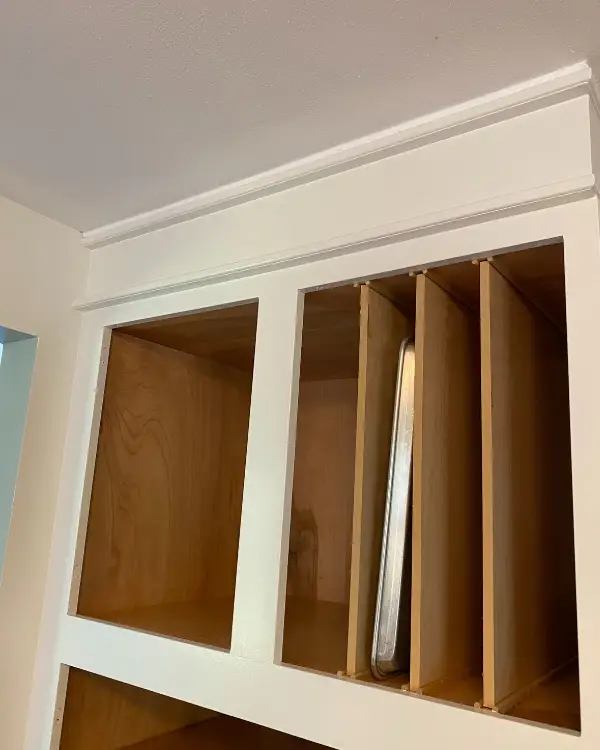
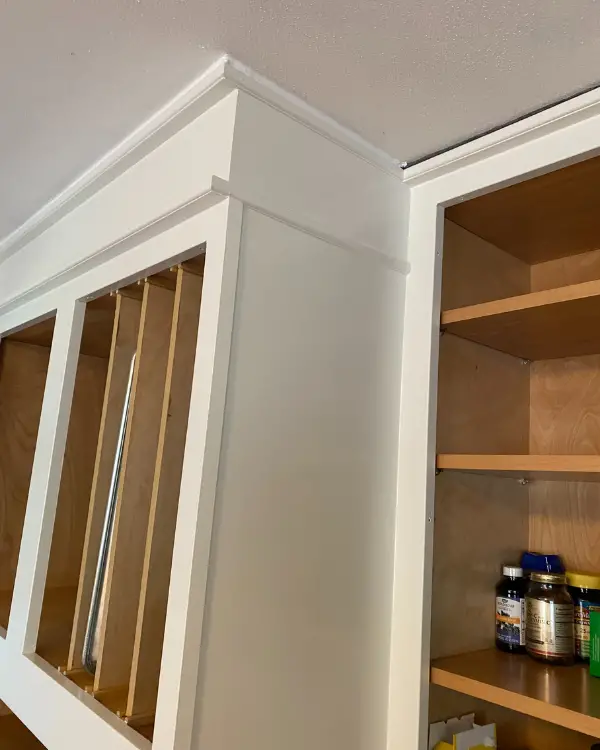
He then filled in the smaller gaps with just caulk, using his finger to smooth it.

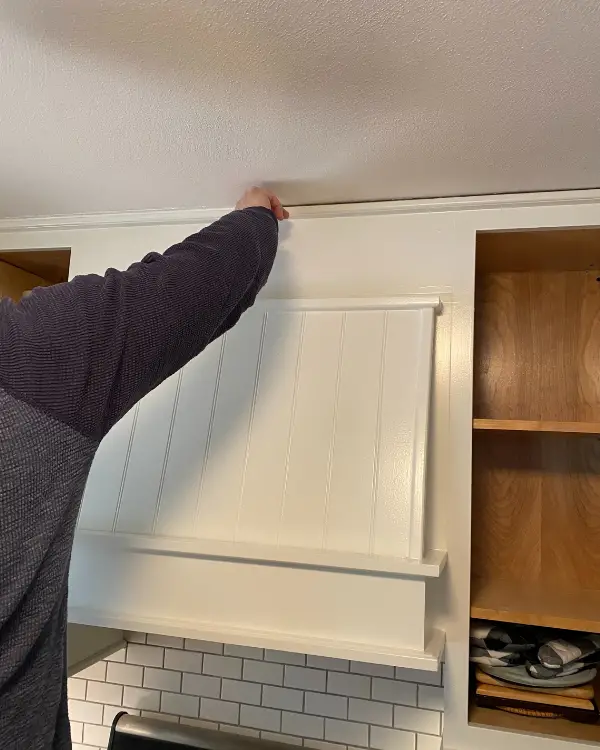
After this was done and fully dried (following directions on the bag), it was ready to be painted.
I’m so happy with the results! The gap is completely gone, and the kitchen looks great!

Shop this Post






